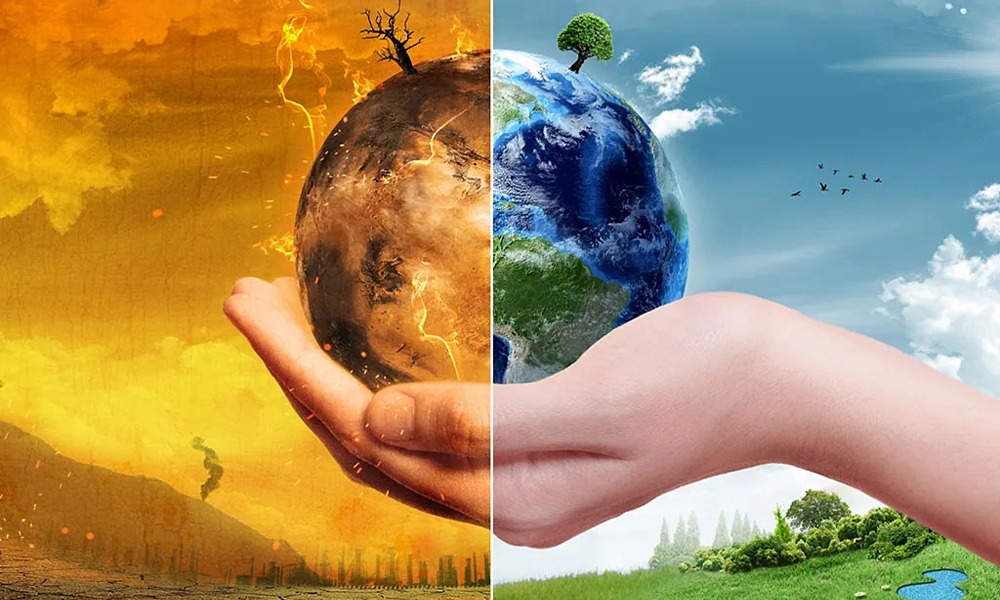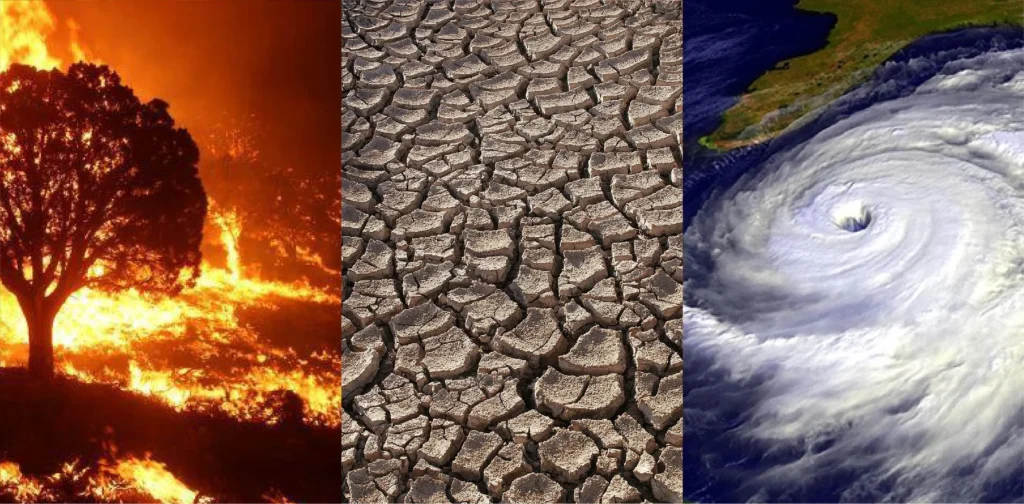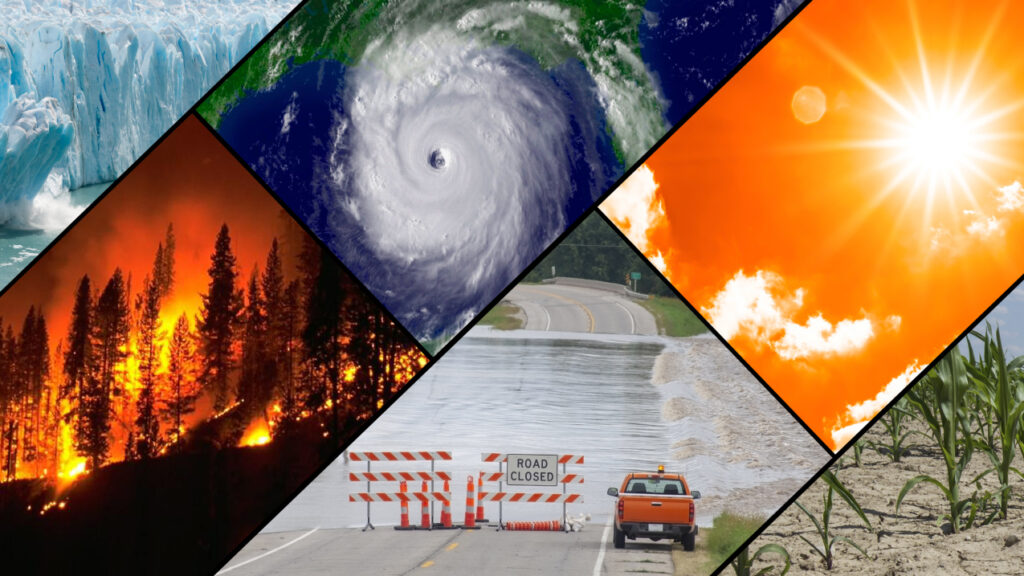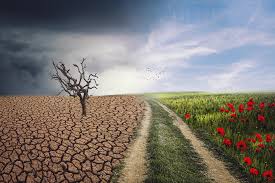the best Climate Change Is Changing Our World: What You Need to Know

Climate change is a big problem that’s affecting our world in many ways. When we talk about climate change, we mean that the Earth’s temperature is getting warmer because of things like pollution. This is causing all sorts of issues, like more storms, heatwaves, and floods.
Climate change is not just a distant worry; it’s something that’s happening right now and impacting our daily lives. We see it in the news and feel it in our weather. It’s important to understand what climate change means and how it can affect us, so we can all work together to make things better.

What Is Climate Change? A Simple Guide
Climate change is when the Earth’s temperature gets warmer over time. This happens because of things like pollution and cutting down trees. When we talk about climate change, we’re discussing how our planet is heating up and how this affects everything around us.
The Earth’s temperature is rising because of greenhouse gases. These gases trap heat in the atmosphere, which makes the Earth warmer. It’s a bit like putting a blanket on a hot cup of cocoa; the heat stays trapped inside. This warming affects weather patterns and can lead to problems like stronger storms and melting ice.
Another big part of climate change is the melting of ice in places like the Arctic. When ice melts, it can cause sea levels to rise. This means that coastal areas might flood and lose land. Understanding climate change helps us see why it’s important to take care of our planet and find ways to fix these problems.
Learning about climate change helps us understand why our weather is changing. It also teaches us why it’s important to reduce pollution and protect our environment. By knowing more, we can all help make a difference in saving our planet.
How Climate Change Affects the Weather Around Us
Climate change is making our weather more extreme. This means we see more heatwaves, heavy rains, and storms. It’s not just about feeling hotter; it’s about how our weather patterns are changing.
With climate change, we’re experiencing more frequent and intense heatwaves. This can make hot days even hotter, which can be hard on people and animals. Heatwaves can also lead to droughts, where there’s not enough water for plants and crops to grow.
Heavy rains are another problem caused by climate change. They can lead to flooding, which can damage homes and roads. When the weather is too extreme, it can disrupt our daily lives and create unsafe conditions. Understanding how climate change affects our weather helps us prepare for these changes and protect ourselves.
By recognizing how climate change impacts the weather, we can take steps to keep safe and adapt. We can also work on reducing activities that cause climate change to help make our weather more stable.
Why Are Heatwaves Getting More Common?
Heatwaves are becoming more common because of climate change. When the Earth gets warmer, it leads to longer and more intense periods of heat. This means that heatwaves are happening more often and can be more severe.
Climate change makes heatwaves more likely because of the increase in greenhouse gases. These gases trap heat in the atmosphere, which raises temperatures globally. This rise in temperature means that even usual summer heat can become dangerously high.
Heatwaves can have serious effects on our health. They can lead to heat exhaustion or heatstroke, which can be very dangerous. In addition, they can put stress on power systems as people use more air conditioning to stay cool. Learning about why heatwaves are increasing helps us understand how to stay safe and protect ourselves during extreme heat.
To reduce the impact of heatwaves, it’s important to find ways to lower greenhouse gas emissions. Simple actions like using energy-efficient appliances and reducing car use can help. By understanding and addressing the causes of heatwaves, we can make our communities safer and more resilient.
The Impact of Climate Change on Our Oceans
Climate change is affecting our oceans in several ways. As the Earth warms, the ocean’s temperature rises, which can harm marine life. This warming also leads to other issues like coral bleaching and rising sea levels.
One big effect of climate change is coral bleaching. Corals are sensitive to changes in temperature, and when the ocean gets too warm, they can lose their color and die. This is a problem because corals provide homes for many sea creatures and help keep ocean ecosystems healthy.
Rising sea levels are another issue caused by climate change. As ice melts from glaciers and polar regions, the water flows into the oceans, causing sea levels to rise. This can lead to flooding of coastal areas and damage to communities. Understanding these impacts helps us see why it’s important to protect our oceans and take action against climate change.
We can help protect the oceans by reducing pollution and supporting efforts to cut greenhouse gas emissions. Learning about these impacts helps us realize why it’s crucial to care for our marine environment and work towards a healthier planet.
Why Climate Change Causes More Floods
Climate change leads to more floods because it changes weather patterns and increases rainfall. When the atmosphere warms up, it can hold more moisture, which can lead to heavier and more frequent rainfalls.
Floods are becoming more common as storms get stronger and more intense. Heavy rains can overwhelm rivers and drainage systems, leading to flooding in areas that might not have had problems before. This can damage homes, roads, and crops, and create dangerous conditions for people.
Another factor is the melting of glaciers and ice caps due to rising temperatures. This extra water flows into the oceans and rivers, contributing to higher sea levels and more frequent flooding in coastal and low-lying areas. Understanding how climate change causes floods helps us prepare and take action to protect our communities.
To reduce the risk of flooding, it’s important to manage water resources carefully and plan for extreme weather. By learning about these changes, we can work together to keep our homes and communities safe from floods.

How Climate Change Affects Plants and Animals
Climate change impacts plants and animals by altering their habitats and food sources. As temperatures rise and weather patterns shift, many species struggle to adapt to these new conditions.
Plants and animals rely on specific conditions to survive. When climate change causes temperatures to rise or rainfall to decrease, it can make it harder for them to find the right environment. For example, some plants may not grow as well if it gets too hot or dry, and animals may not find the food they need.
Changes in climate can also affect migration patterns. Birds and other animals that move to different places for food or breeding may find that their usual routes or habitats are no longer suitable. This can disrupt ecosystems and make survival more challenging for many species.
Understanding how climate change affects wildlife helps us see why it’s important to protect natural habitats and take action to reduce emissions. By learning about these effects, we can work to preserve the diverse life forms that share our planet.
The Effect of Climate Change on Our Food Supply
Climate change is impacting our food supply by affecting crop growth and food production. As the Earth’s temperature rises and weather patterns become more unpredictable, growing food becomes more difficult.
Warmer temperatures and changes in rainfall can lead to problems like droughts and poor crop yields. When plants don’t get enough water or face extreme conditions, they can produce less food. This can lead to higher prices and less availability of fruits, vegetables, and grains.
Another concern is that climate change can increase the risk of pests and diseases that affect crops. Warmer temperatures can help pests spread more quickly, which can damage plants and reduce food production. Understanding these effects helps us see why it’s important to address climate change to ensure a stable food supply.
To protect our food supply, we need to support sustainable farming practices and work on reducing greenhouse gas emissions. By taking these actions, we can help make sure that food remains available and affordable for everyone.
How Pollution Contributes to Climate Change
Pollution contributes to it by adding harmful gases to the atmosphere. These gases, like carbon dioxide and methane, trap heat and make the Earth warmer.
When we burn fossil fuels like coal and oil, we release these greenhouse gases into the air. This is a major cause of it as it increases the amount of heat that gets trapped in the atmosphere. Cars, factories, and power plants all contribute to this pollution.
Pollution also affects the environment in other ways. For example, it can damage air quality and harm plants and animals. Reducing pollution helps slow downit and improves our overall environment.
To help fight it, we can reduce pollution by using cleaner energy sources, like wind and solar power. Simple actions, like walking or biking instead of driving, can also make a big difference. By working together to cut pollution, we can protect our planet and make it a healthier place to live.
Why Some Places Are Hit Harder by Climate Change
Some places are hit harder by climate change because they are more vulnerable to its effects. These areas might be low-lying or already struggling with issues like poverty or poor infrastructure.
Low-lying coastal regions are especially at risk from rising sea levels. As ice melts and sea levels rise, these areas can experience more flooding and erosion. This can damage homes and disrupt communities that live near the coast.
Regions with weak infrastructure may also struggle more with it. If an area doesn’t have strong buildings or systems to handle extreme weather, it can be harder to recover from storms or heatwaves. Understanding why some places are more affected helps us see why targeted help and support are needed.
To support these vulnerable areas, we need to focus on building stronger infrastructure and providing resources for adaptation. By helping these communities prepare for and respond to it, we can make a positive difference.
The Health Risks of Climate Change
Climate change poses several health risks, including heat-related illnesses and the spread of diseases. As the climate warms, people can suffer from health problems caused by extreme temperatures and changing disease patterns.
Heatwaves can lead to heat exhaustion and heatstroke, which are serious conditions that need medical attention. Older people, young children, and those with certain health conditions are especially at risk during extreme heat.
it also affects the spread of diseases. Warmer temperatures can help diseases spread more easily, and changes in weather patterns can impact how diseases are transmitted. For example, diseases carried by insects like mosquitoes can become more common in new areas. Understanding these risks helps us see why it’s important to take action against it to protect public health.

Conclusion
Climate change is a big challenge that affects many parts of our world, from our weather to our oceans and even our health. It’s important to understand how it impacts us so we can take action to protect our planet and make a difference. By learning about these issues, we can see why it’s crucial to reduce pollution and care for our environment.
Everyone can play a part in fighting it. Simple actions, like using less energy and reducing waste, can help make a big difference. Together, we can work to create a healthier planet and a better future for everyone. Let’s all do our part to help combat it and take care of the Earth!





